Don't wanna be here? Send us removal request.
Text
Week 11 & 12
Week 11 & 12
This week my group and I presented our prototypes and the website so far. We got feedback from Anna and our group also gave each member feedback and had discussion on what we could do in order to increase fluidity and make sure all of our ideas come together coherently. After hearing Anna’s feedback, we agreed that our website had excess content on it and that we’d cut down on it. Furthermore, Anna also thought our web pages and headings should relate more tuned toward our prototypes. With this feedback and our own individual feedback in mind we began came together again as a group in a call and created a website plan that we’d all follow again to make sure everything clicked. The plan is provided below and will be mainly worked on in week 12’s class and possibly some after. In this plan we individually described the purpose of our web page and the message it was to give, also Anna gave us further feedback here which will also be considered when adjusting our content. I also completed my web page of the website in advance as I knew I wouldn’t be in class. I completed the web page by writing body about my page ‘our differences’ talking about what it is our suburb does different, how our goal are being met, why we think other suburbs should to the same, and the technologies/ innovations we’re using. Additionally I made 3 news articles from the community set in future tense which helps the reader understand what is is we’re doing differently and the approaches were taking. Also how showing how well and integrated is is for us with hope to show future suburbs in Auckland as well why they should do the same.



In week 12 I was not in class however messaged members in my group about the feedback that we received my group and I worked as individuals to complete their web pages with any questions we had for each other said on the group chat. As I had finished mine ahead of our projection I instead worked on brushing up my web page and where I saw necessary on the website. Anna had given feedback that was also put on Trello by a teammate for the group to view. In this time I also created the skeleton for the about page that Anna mentioned we should have as well as incorporating our 90 second video on this page. Further, I change the name of my page from “What we do different” to “Our Differences” and also re-linked and re-titled the Home page to account for the changes our group had made, also revising my web page and putting my summary of it on the homepage and about page. After this was complete I put my references on the website alongside the group then we wrapped things up ready fro hand in. My reflection on this class and working with my group was that although sometimes challenging we worked well as a group and our communication was really efficient. Sometimes scheduling proved difficult but for the most part I think all members of the group contributed well and carried their weight.
0 notes
Text
Week 10
In today’s class our group further discussed each other’s protypes and what they what we were trying to convey. I had finished mine during last week’s lesson and continued to fill out our website with place holder imagery, texts boxes, links, pages, and other various elements to make the website more complete. This class I had completely finished the skeleton of the website ready to fill with any body text and information the group had for their prototypes and ideas. I developed the website maybe more than I needed to however I thought that it’d be easier for myself and the group to remove content as opposed to creating and adjust for new content with little knowledge in doing so. We remained in call whilst everyone was finishing what they were doing then at the end of the class we decided it’d be more manageable for me and as a group to split up the work amongst ourselves by dedicating a page to each member. At this point we are yet to work on the website at the same but hopefully it doesn’t become problematic and disrupt other members. Pictures of the web pages that make up the website are provided below. Note that screenshot are taken on a phone and has moving imagery (didn’t know how to do it on a laptop) and the website isn’t completely optimized for phone.

0 notes
Text
Week 9
During week 9 we had a quick class meeting then set off into our groups and started further developing our final ideas for how it is our website was going to be composed on Wix, what content was going to be available on there how we could begin to implement our ideas onto it. During this lesson I personally made my Juxtapose using the Knight Lab website. I thought that my Photoshop ability wouldn’t be proficient enough to create an entirely new landscape of an existing place that suited the future sustainable neighborhood that we had imagined. So, I thought of a comparison I thought would be visually appealing as well as fitting into our theme. I searched for areas in which went through large industrial change and found a frame of a suburb in which had implemented increasing amounts of high-rise buildings. I had also noticed that there were early developing trees in the area as well as the picture quality being poor. I thought this would be perfect as if I jumped to current satellite imagery were the trees had grown, high rise building had been complete and picture quality was high that this would give the impression of notable development and due t the contrast of the picture quality of the picture the suburb appeared ‘greener’ and so fitting our sustainable future idealization of a suburb. It was also in this lesson where my group and I decided I would be ‘website project management’ due to my prior experience. The rest of the group at this point was making their prototypes also on the KnightLab software and touching up anything that might’ve needed it ready to incorporate onto the website next week making sure also that they fit our theme and what if question established earlier. I then selected a color palette for the website to have the website stay consistent with our ideas and theme. I picked an easy to read but aesthetic font which I thought looked modern and appropriate for a website being displayed in the future. As of this point, our neighborhood is called ‘New Flat Bush’ due to the area where the developed suburb will be. An image of the landing page and my juxtapose are provided.


0 notes
Text
Week 8
Week 8
During this week’s class we entered the design sprint segment of our class’s weekly program. Our group discussed what we took from the classes further development surrounding our knowledge on design fiction and diegetic prototyping. Our group had discussion on what ideas and potential futures we might like to focus on for our assessment. We talked about our topic of climate change and sustainability and decided that or focus of the Auckland plan is a nice way to have tunnel vision on our topic and instead of regressing we decided it’d be smart to maintain our focus on Auckland so we would have more time to spend expanding on our current ides as opposed to thinking up entirely new ones. We further also developed our understanding of story telling through means of class discussion, group discussion and teachers notes. We worked as a group also to develop a what if idea, brainstorm ideas for our diegetic prototyping, decided on Wix as a platform and assigned all of these tasks on Trello as shown below.

Once our discussion was complete we had decided on our what if statement and were happy with it “what if we don’t make changes and continue at the same rate and direction we are heading for.�� All possible what if statements are provided below. We chose this route as it is a pessimistic what if question and we believed it to have a lot of potential evidence and room for discussion.

Next our group brainstormed prototype ideas and categorized them so that our focuses would be nicely organised and easy to identify. Categories includes, hopeful – no change, optimistic (Green) – pessimistic (Red), and final prototypes. Once again provided below.



0 notes
Text
Week 7
Week 7
Classes from this point forward were all attended online. During this week’s class we took a look at speculative design, the main focus of this design helps us develop new perspectives on wicked problems. It taught me that when using speculative design, it creates space for discussion and debate. The main take however is that speculative design is about abstract think when considering possible futures as opposed to predicting the future. Furthermore, in this week’s class we looked at design fiction and diegetic prototyping. We learnt the 6 key concepts of design fiction how it is design fiction takes objects and uses them in order to tell speculative stories about possible futures. Whereas diegetic prototyping is focusing more so on a design or object that we can see to realistically exist within a fictional future world. Using this method, similar to speculative design promotes our imagination to consider possible futures.
The class was then shown some diegetic prototypes examples that others outside of our class had made up and further explained by the teacher. Class discussion was had on as to what might have inspired these ideas. Firstly, we explored the prototype of ‘Electrix.’ Electrix is an alarm clock which is connected to all of the users’ social medias and likes, hearts and favorites everything that the consumers had missed/ was posted while they were asleep. One of the selling points was to never come across as a bad friend again. My take from this prototype is that it was inspired by today’s world’s addiction and obsession with social media and validation from others. It makes me question just how much time we spend on social media and how much of a problem and chore it is that an idea like this was formed from it, showing perspective on a world where we can’t even sleep without it.
Secondly, “Screen Tan.” Screen Tan is an ultraviolet light attachment for our devices that gives the user a uniform tan after time spent on our devices. The product also comes with eye protection to protect the user from intense UV exposure. My thoughts are that the extreme nature of the inspiration of this prototype is inspired again by our obsession with our device and the facts that time spent outside has been drastically decreased as technologies advance.
Lastly, ‘SafeWord.’ SafeWord is a product installed in the mouth of the consumer in which constantly monitors speech patterns, and shuts down offensive, inappropriate or undesirable utterances. This purpose and selling points being that occasionally we let words slip and these words can be problematic especially considering friends and workplaces. I believe what inspired this prototype is our societal nature to be so cautious and critical to what is ourselves and others say, further I believe this is due to the globes increased sensitivity especially considering public figures and regular users of social media. Makes me further question whether or not people are taught and regularly practice discipline and self-control. This product is also a huge self-violation of our rights to free speech and could ultimately create more controversy than it would save. The fundamental principle that this product relies on is that ignorance is bliss.
We then played a creative futures game where were split into groups and create a postcard in the future. With considering what the future would be like, what it is we could put in a postcard to still represent thoughtfulness. Our group decided that as our world is projected to become majorly automated that we would include a handmade good and a book teaching the receiver how it and other handmade goods can be made. The idea behind this is that with the automation of goods and services they will begin to lose meaningfulness and personalisation, we thought we would take things back and show how much more thought provoking and meaningful handmade gifts are. This shows that the sender really put care and effort to the product, and it was made for the receiver specifically as opposed to a mass market.
Finally, the group work for this week’s class was to complete a design fiction matrix together. Our group did so via call and discussed and noted our ideas collectively. As shown below, my specific notes are the vertically stacked sticky notes in yellow. The matrix gave us perspective and clarity on potential future designs and prototyping.

0 notes
Text
Week 6
Week 6
This week I was huddled in a ball at home this Wednesday's class due to lock down hitting New Zealand as of midnight Tuesday in week 6. Class was carried online and we looked at speculative design and extrapolation. Speculative design is a method we can use when looking at large scale societal problems and when looking at the future. Furthermore it can be used to create products and ideas. Designing in this way is hugely beneficial due to its focus on the future, however it is important to note its not a tool which aims to predict the future instead its exploration of possible ones. “Although the future cannot be predicted, we can help set in place today factors that will increase the probability of more desirable futures happening” (Dunne & Raby, 2013, p. 6).
So for example when looking at possible futures in regard to a wicked problem like climate change there are many possible futures based on how far into the future and who you ask. Some more pessimistic people may have a very baron and grim future painted in their mind whereas some more optimistic might see a brighter, more established future. The method is reliant on imagination and how different people have different outlooks on the same topics therefore creating debate and inspiration on future settings and scenarios.
We then were presented the problem of overpopulation, over consumption and a possible solution. The solution being something called Neofruit, which is based on the idea of a potential future where all food is made artificially and printed on a four dimensional scale.
Following, Anna spoke to us about extrapolation being concluding something by assuming existing trends will continue. We were shown an example of this in the first episode of Black Mirrors, season 3. The episode is set in a world where a star rating system has been heavily influenced, having people give each other a star rating which is publicly displayed above the heads of individuals. Comparable to China’s social credit system where people are rewarded and or punished based on; online behavior, social media interactions, credit history, traffic violations, criminal record and real time surveillance.
References:
https://www.youtube.com/watch?v=oLc2E4P87QE&t=2s&ab_channel=fauxalias
https://www.wired.co.uk/article/china-social-credit-system-explained
0 notes
Text
Week 5
Week 5 class we looked at informative visualizations again and how we could improve them. We discussed alongside the class the examples on the presentation our teacher was showing us. Furthermore, How to make a video on power point as well as how to make animations. Next our group mainly focused on our presentation and information gathering. We researched slightly different sections of our topic then and wrote our information on sticky notes. Once having done this we brought all of our information together and organized them on our white board, deciding which information is most important and relevant for our upcoming visualization (environmental and cultural heritage). Further we decided on a structure for our presentation, that being; plot > incident > rising action > climax > falling action > resolution. Lastly the Auckland 2050 plan outlines the major challenges in which we are facing and how it is our plan of acting to combat these issues. Below is our group's work for this lesson. My contribution being the information on the yellow sticky notes (Sorry for the small handwriting).
Reference: https://www.aucklandcouncil.govt.nz/plans-projects-policies-reports-bylaws/our-plans-strategies/auckland-plan/environment-cultural-heritage/Pages/default.aspx
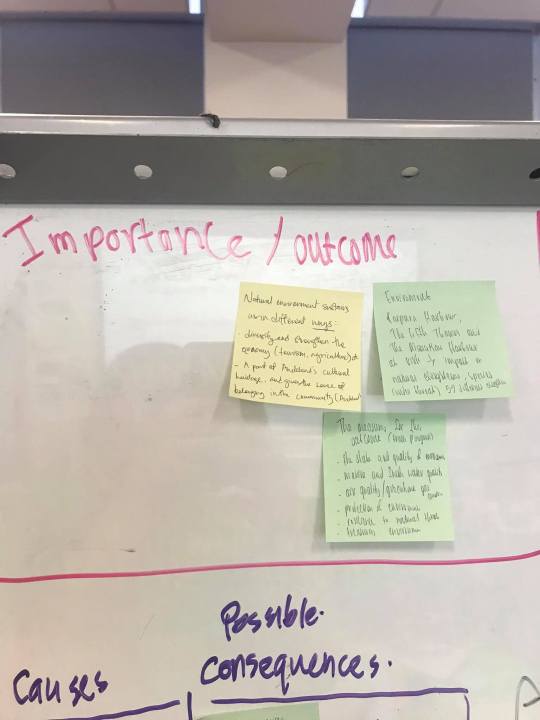
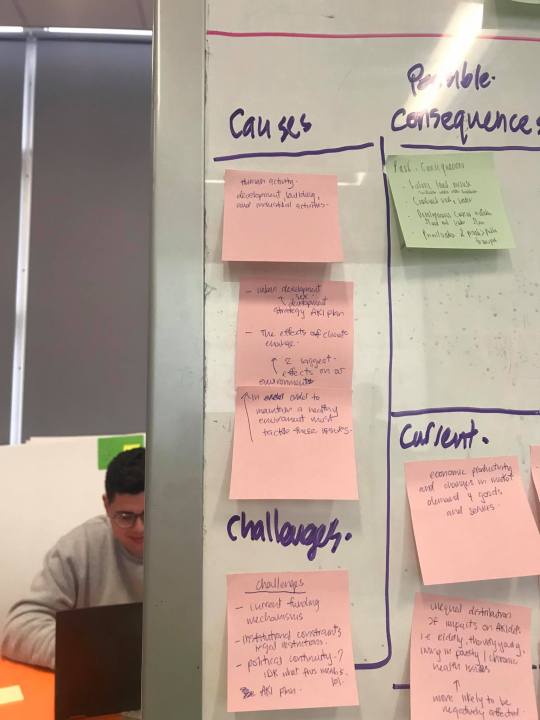
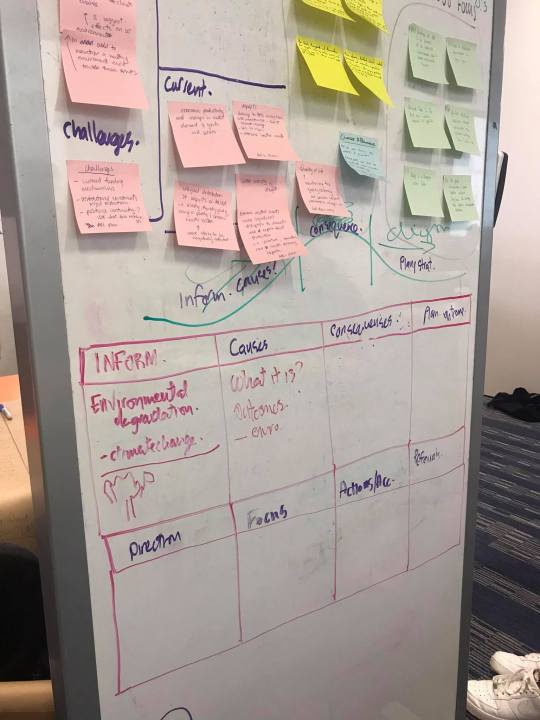
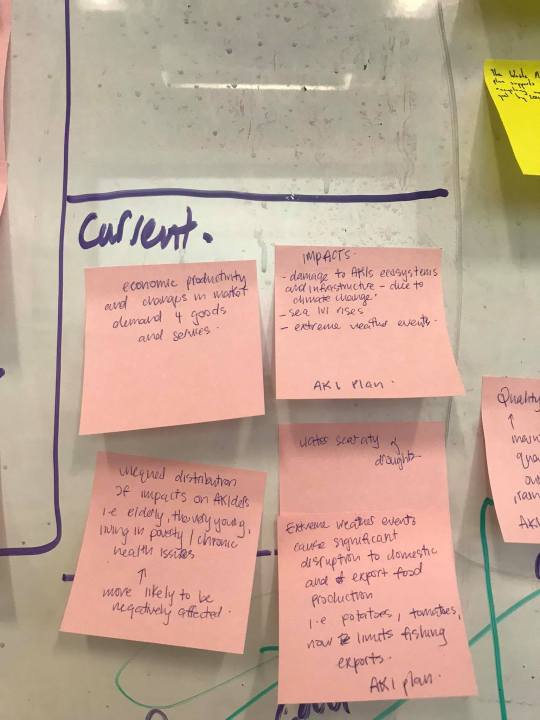
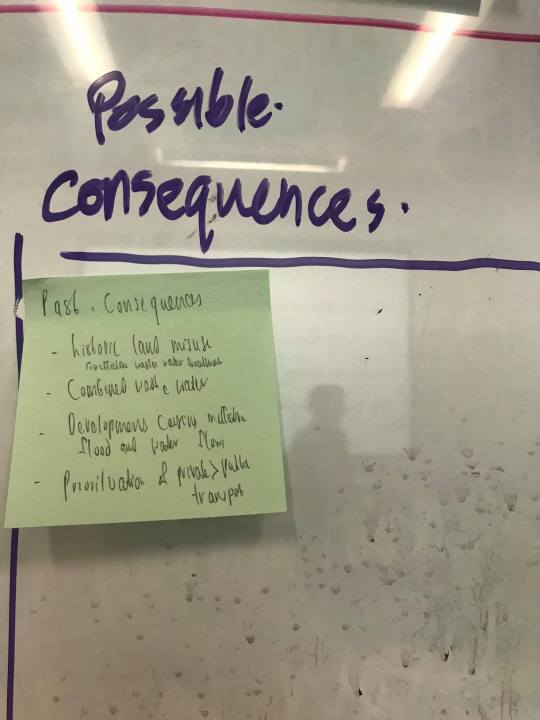
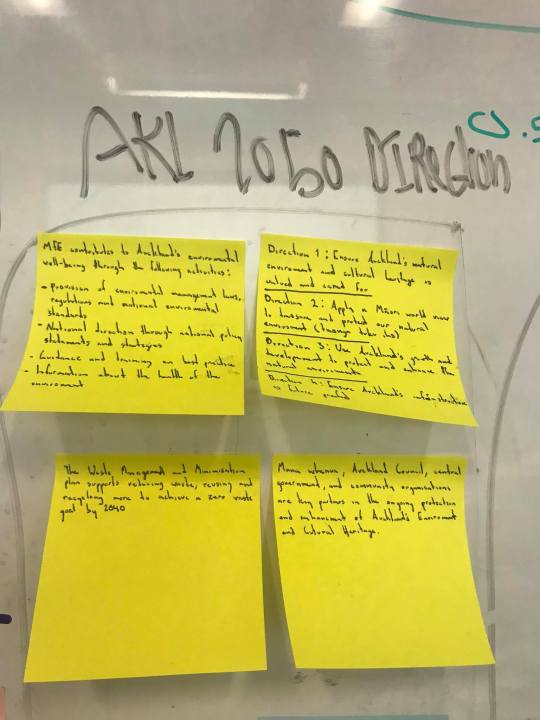
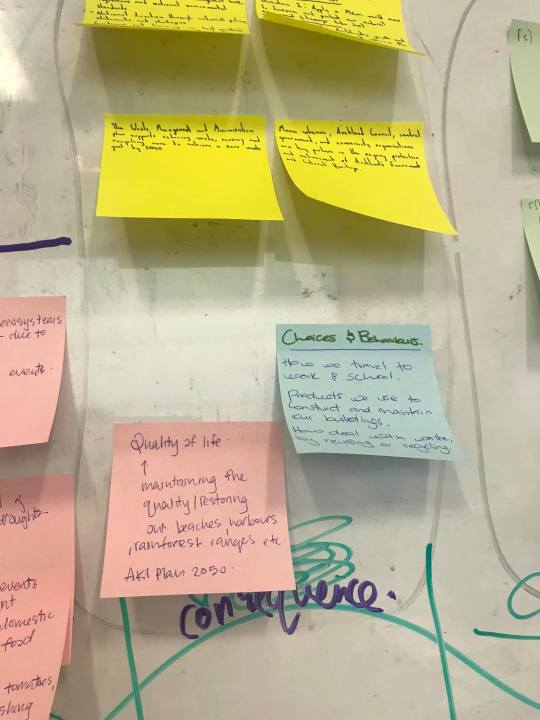
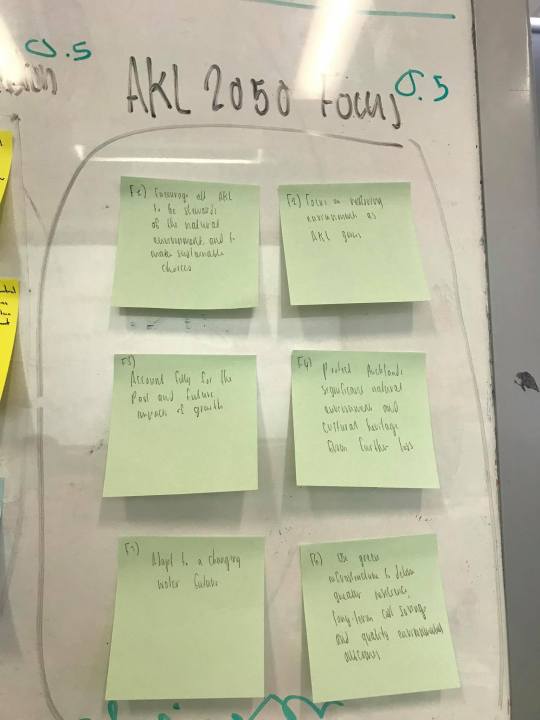
0 notes
Text
Week 4
This week our group discussed our options on what we’d like to do for our topic. We made a graph in order to narrow our options surrounding climate change and sustainability. The graph would be segmented into global, national, regional, and personal areas in which each of our group members focused on. Once we had done so we decided it would be best to focus on Auckland and its people. The main questions we asked were how is it we as Aucklander’s are affected by climate change and how can we make a difference. Once deciding on this topic we took it further by focusing on Auckland's 2050 plan which gives us a strong, relatable and local focus when writing on the issue. We further looked in class at ways in which we can visualize information to make it more bite size and interesting for the viewer, getting inspiration on how we could set up our slide show coming up. Lastly, our teacher suggested the groups of the class set up a Trello for better more organized project management. We instead made a group chat where we would assign tasks and work together
0 notes
Text
Week 3
Week 3
(Absent/ Working) Firstly the class took a quiz with the focus on challenging some assumptions in which we tend to have. Reading through how others saw their answers after having received their score showed me how nowadays due to the likes of social media and negative publicity surrounding today's world, that people's assumptions have become increasingly more pessimistic. Furthermore, showing me that negative information tends to ‘weigh more’ in our minds and thoughts than something equally as positive.
Following, the class was introduced to future thinking. The topic being consumption, and habits surrounding food in future. As time progresses and conditions of the planet change, so do our habits and agendas. One which may not be thought about so much however is our need and access to food. The class was asked to discuss the topic of how food might change in future. I thought of how urbanization and industrial pollution may affect naturally grown foods around the world as our population increases. Not only would this mean less land for crop and harvesting but there would ultimately also be more mouths to feed. Trying to keep supply up with demand would require significant and innovative changes in the ways we grow our food. When discussing the topic with my family on how they see this being resolved we suggested that indoor and vertical farming would become increasingly more popular as it would produce significantly more food on the same amount of land. However it is not without its own problems such as; limited range of possible crops, high initial cost to produce etc.
Lastly my group looked at topics and issues in which we think might shape the future in 2050. The group struggled to decide on a topic as the whole group was not present (myself included) however there was discussion and consideration in regard to resource management, climate change, degradation of the planet and resource management.
References:
https://www.edengreen.com/vertical-farming#:~:text=Vertical%20farming%20is%20a%20way,light%2C%20and%20humidity%20to%20succeed.
https://study.com/academy/lesson/overpopulation-vs-over-consumption.html#:~:text=If%20the%20human%20population%20grows,capacity%2C%20resources%20will%20become%20limited.&text=The%20second%20concern%20is%20overconsumption,higher%20than%20the%20production%20rate.
0 notes
Text
Week 2
Week 2
Reflect on today’s workshop: What were the key activities and concepts?
(Absent/ Working) In this class groups were formed with our teacher making sure there was a; mix of genders, mix of majors, mix of people who don't know/ haven't worked with each other before, mix of international and domestic students, and mix of personalities in each of the groups.
Following, the class was instructed to observe the room and find things that they hadn’t noticed when they had entered. As I was absent I chose instead to do this in my living room at home. I found:
One of the ceiling lights wasn't aimed directly down
Phone charger wedged in the space under our tv stand (likely been there awhile)
Line on wall
Small indentations on the hardwood floor
Tiny furniture markings
Small orange light on speakers
Lounge table was recently cleaned
TV stand was recently dusted
The purpose being to show that we are not always mindful of what is around us and that even the most obvious things may not be registered in our brain when we are not mindful of our surroundings. This taught me our mind tends to fill in gaps of what we preserve in a given environment however does so with very little detail until thought upon and observed mindfully.
The next activity the class did was the photo safari. The class was asked to put together a visual narrative that explains to “aliens” everything they might need to know about campus and the people who occupy it. I did so instead in my household, below I have provided photos for visualization. The class was asked to be mindful and observant of our surroundings when taking the photographs. I documented the day to day lives of the creatures that I live with. My photos capture this as well as the surrounding where the photos are carried out. It wasn’t till observing where I began putting pieces together and putting into words what I have photographed. One observation is that the setting is comfortable and people in this space know that and aren’t following any kind of agenda instead relaxing, socializing and winding down.
Start doing some more focused research: what do experts think are the issues that will shape our future?
We can relate this to exploring things which may affect the way we view the issues that might affect our future as it offers a different perspective when observing our surroundings. For example a concern to many is the take over of AI in our world leaving people without jobs etc. If we were to picture a factory in 2050 with all factory workers replaced by robots our initial reaction might be to think about the income and jobs stripped from the workers who were there prior however using a different perspective we might now instead think that the world is reaping the benefits of the advancements in technology and instead, spending more time at home with their families whilst AI remains doing the strenuous jobs which humans had to do prior.
Reference:
https://www.bbc.com/future/article/20170713-what-will-the-challenges-of-2050-be
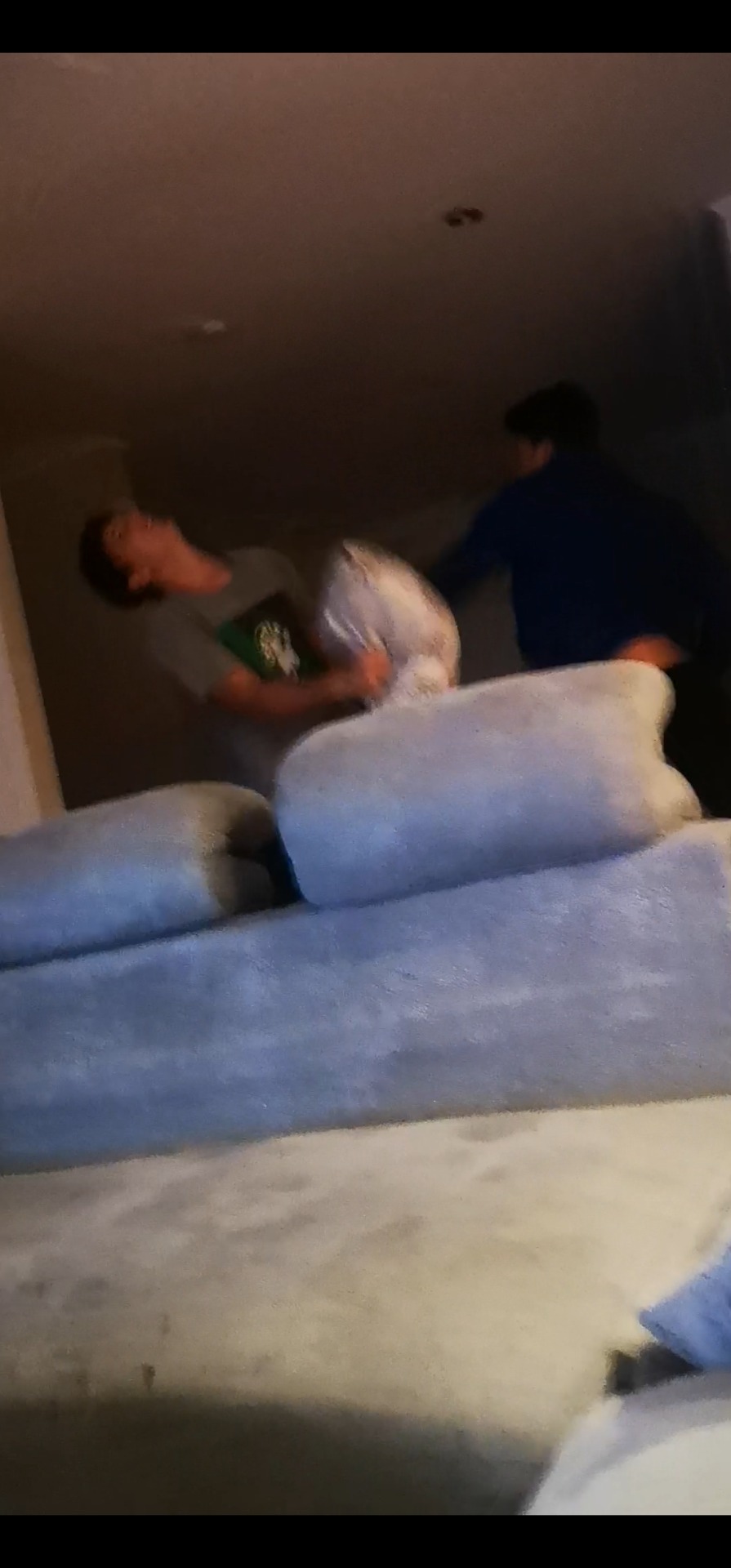
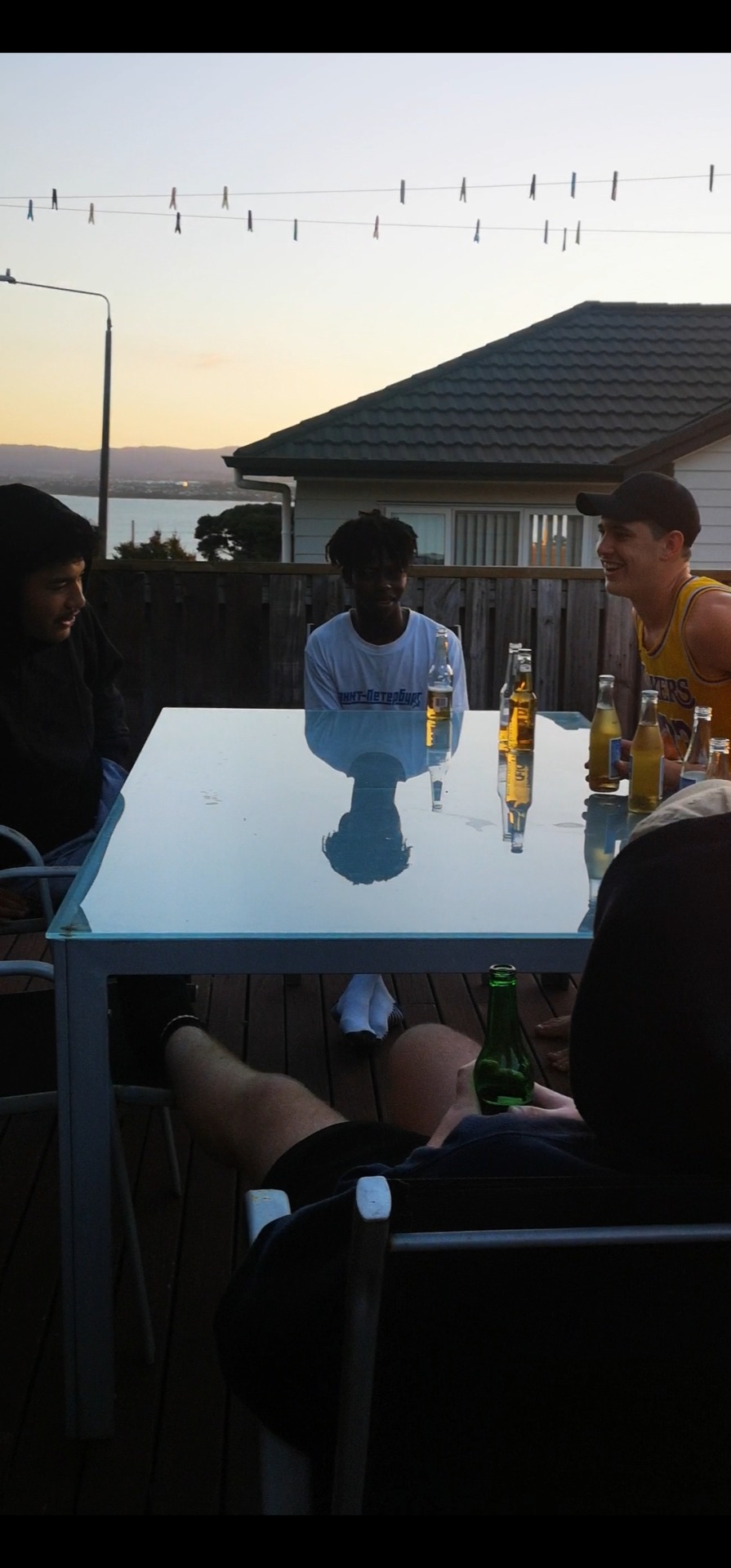
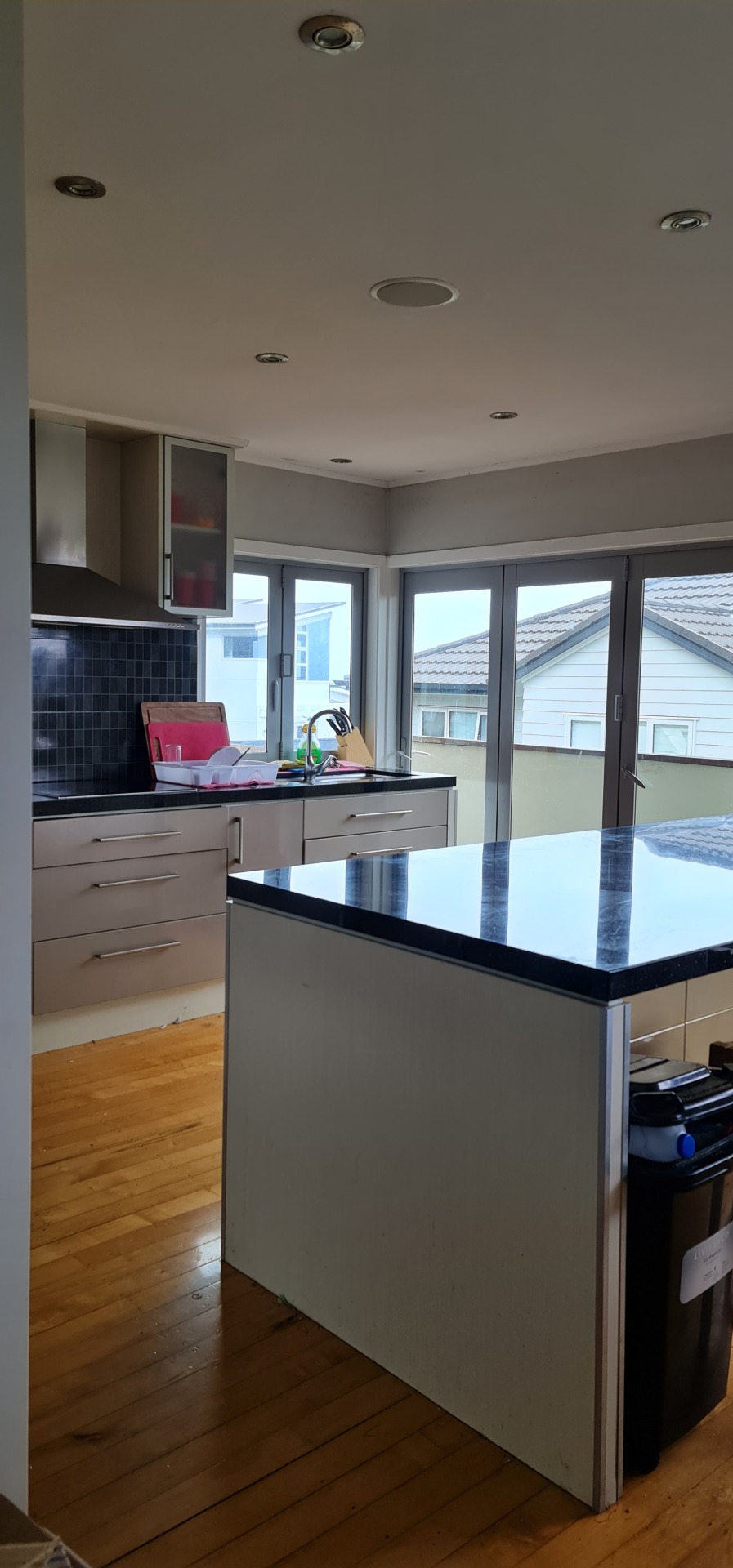
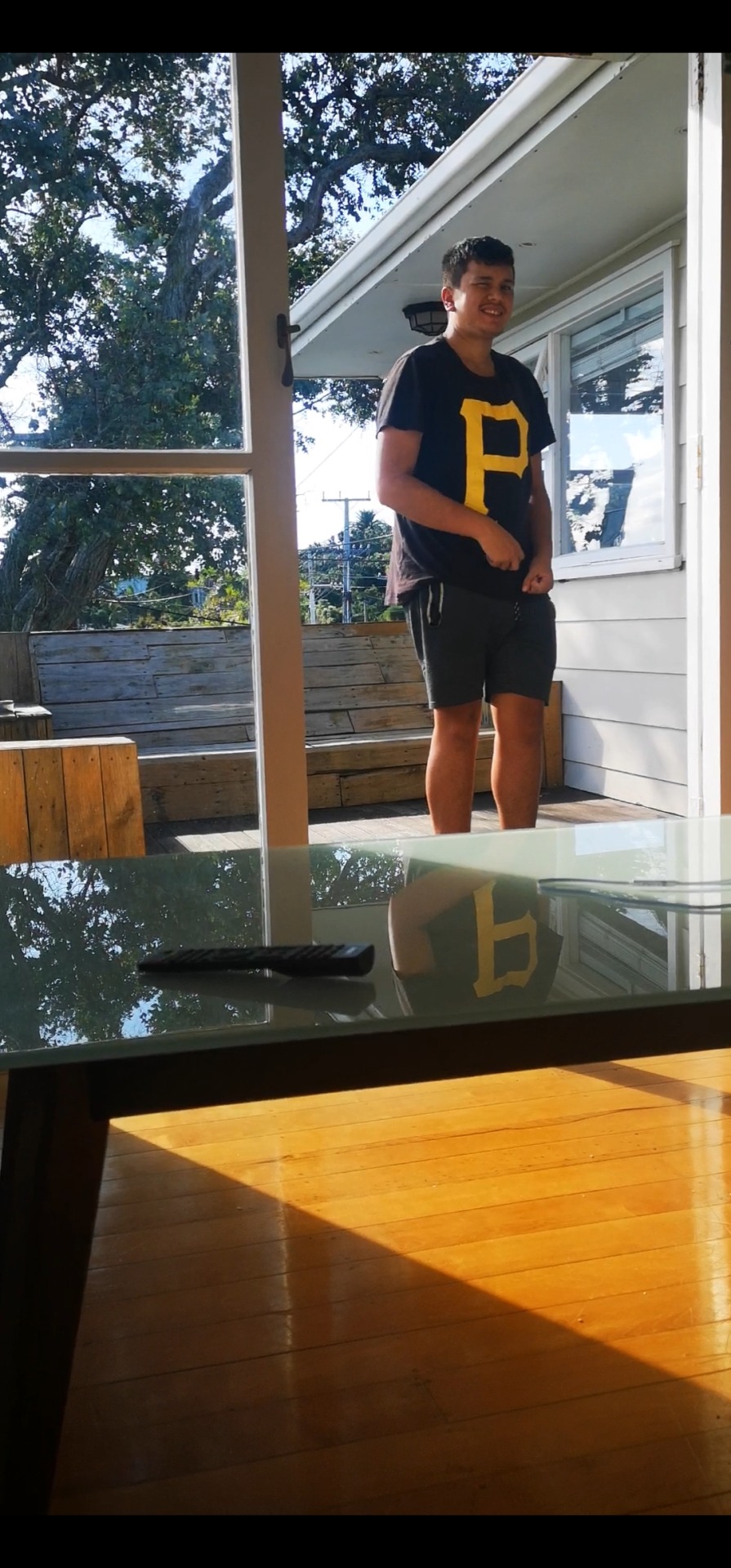
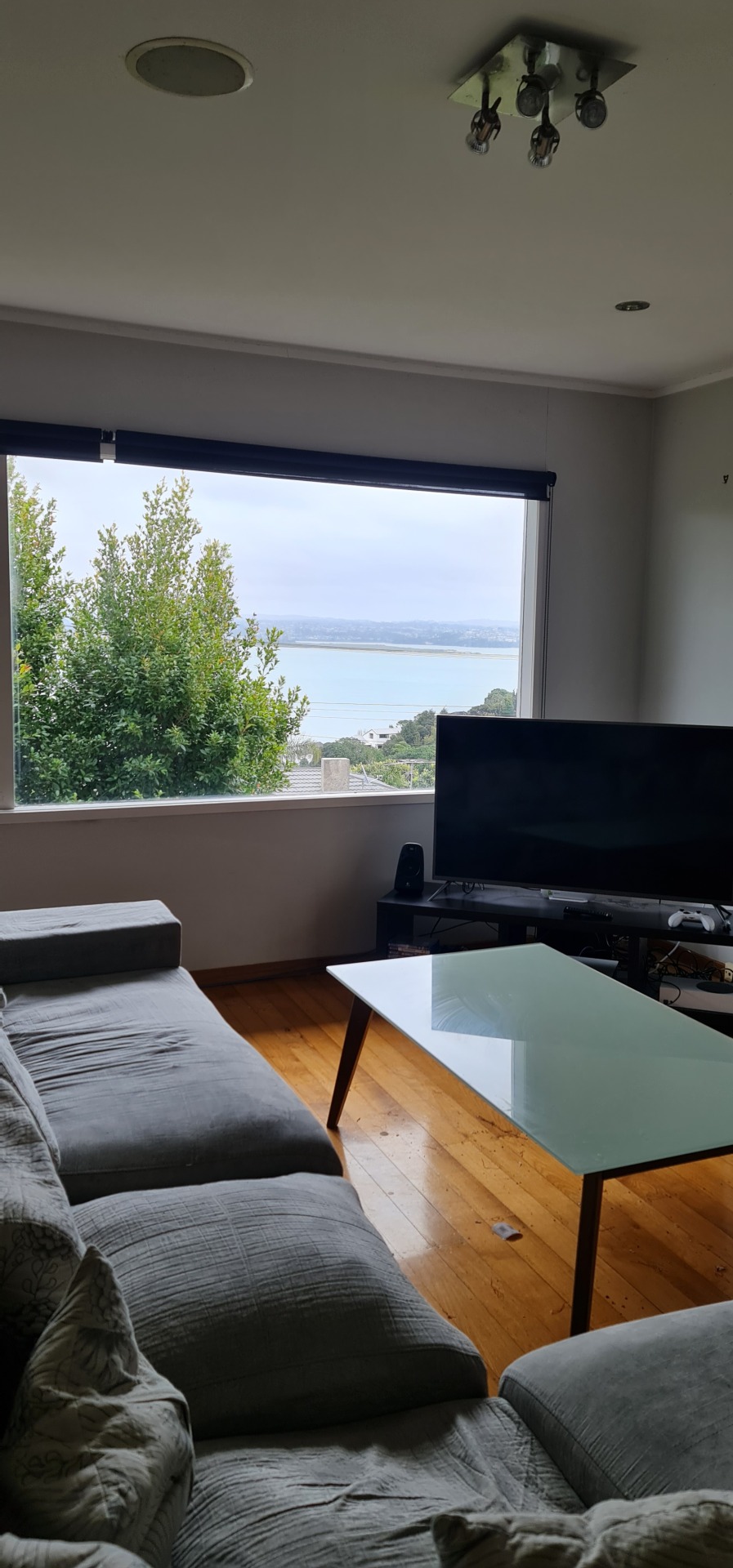
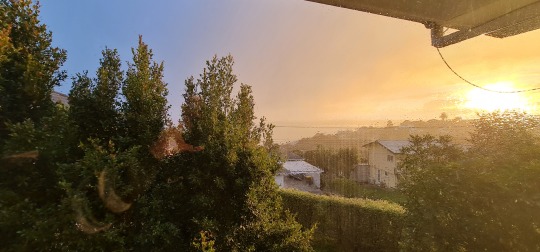
0 notes
Text
Week 1
Week one of DESN604 I had not enrolled yet into the class and wasn’t physically present, although looking through the slides I can begin to understand what was learnt in class. Firstly starting with introducing ourselves to each other with certain prompts being, my name is, i grew up in, when I was a kid I liked to, I’m studying, In my free time I like to. These prompts help classmates conversate and build solid first impressions through discussion.
Next the class was introduced to design thinking storytelling and the weight it holds. More specifically how stories hold our attention, stimulate emotions, encourage empathetic transportation and motivate behavioral change.
The concepts explored in week 1 were, mental models, system thinking, and wicked problems. The systems thinking exercise used was from a TED talk speaker named Tom Wujec.
(Tom Wujec: Got a wicked problem? First, tell me how you make toast) The class had to illustrate how it is they see the process of making toast, below is my interpretation:

What I took from this lesson was when asked to carry out this activity, people have the tendency to illustrate their thoughts using nodes and links, this being the systems model. Nodes in the illustration being the tangible tangible objects and the links being the connections between the nodes. Demonstrated in my above illustration the nodes are the bread bag, the bread, the toaster, and finally the toast. Whereas, the links are the arrows in which I used to help the viewer understand how they are connected.
Lastly the class was asked to discuss issues faced in New Zealand currently which could affect and or shape our future. When I thought about these issues I grouped issues based on geographic size i.e locally, nationally, and globally. Firstly I thought of Auckland’s housing prices, poverty, and population growth. Secondly I thought of depression, obesity, and unemployment. Lastly, how our reliance on agriculture, personal transport, and increasing infrastructure expansion affects our planet.
Sources used:
https://www.youtube.com/watch?v=_vS_b7cJn2A&ab_channel=TED
0 notes